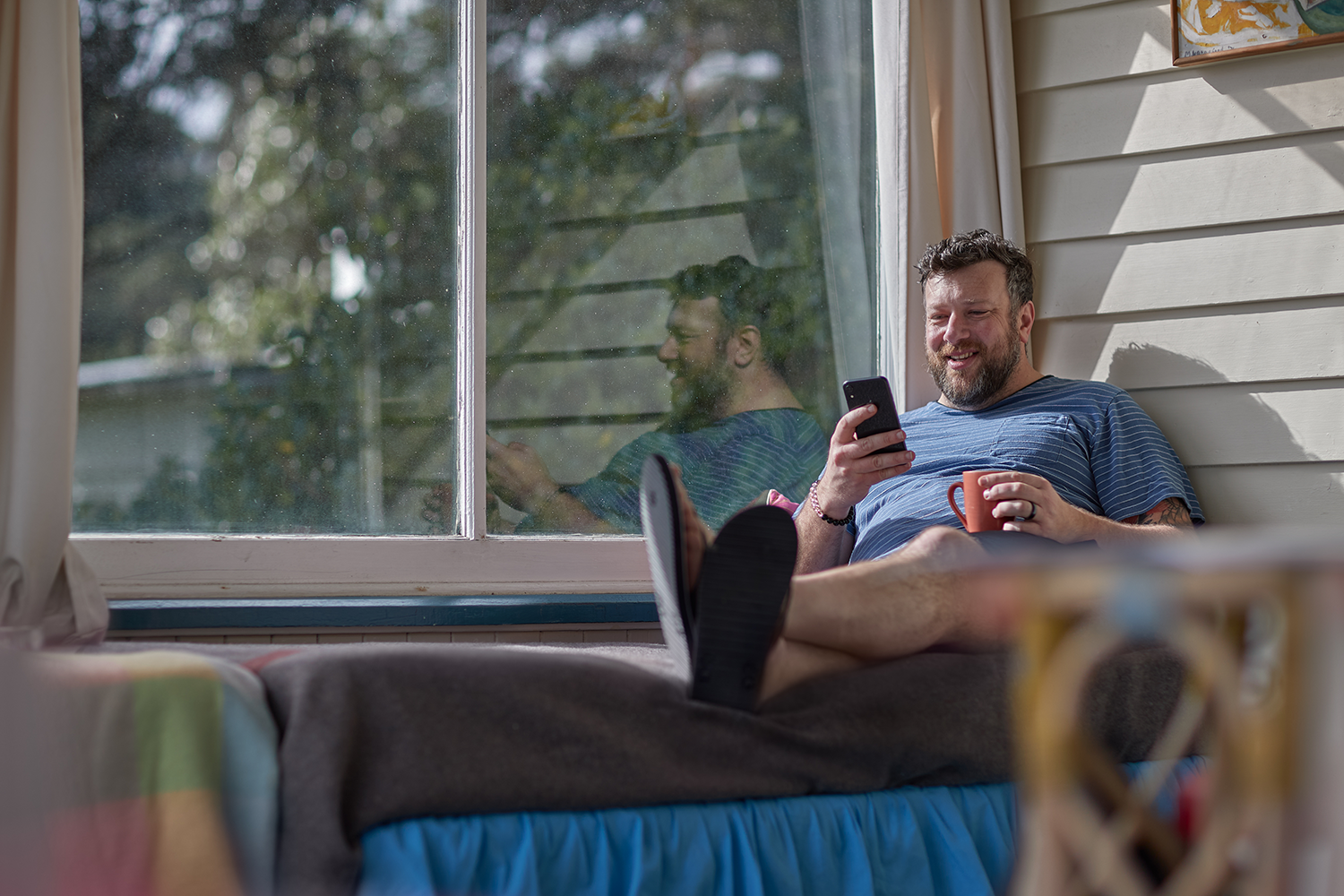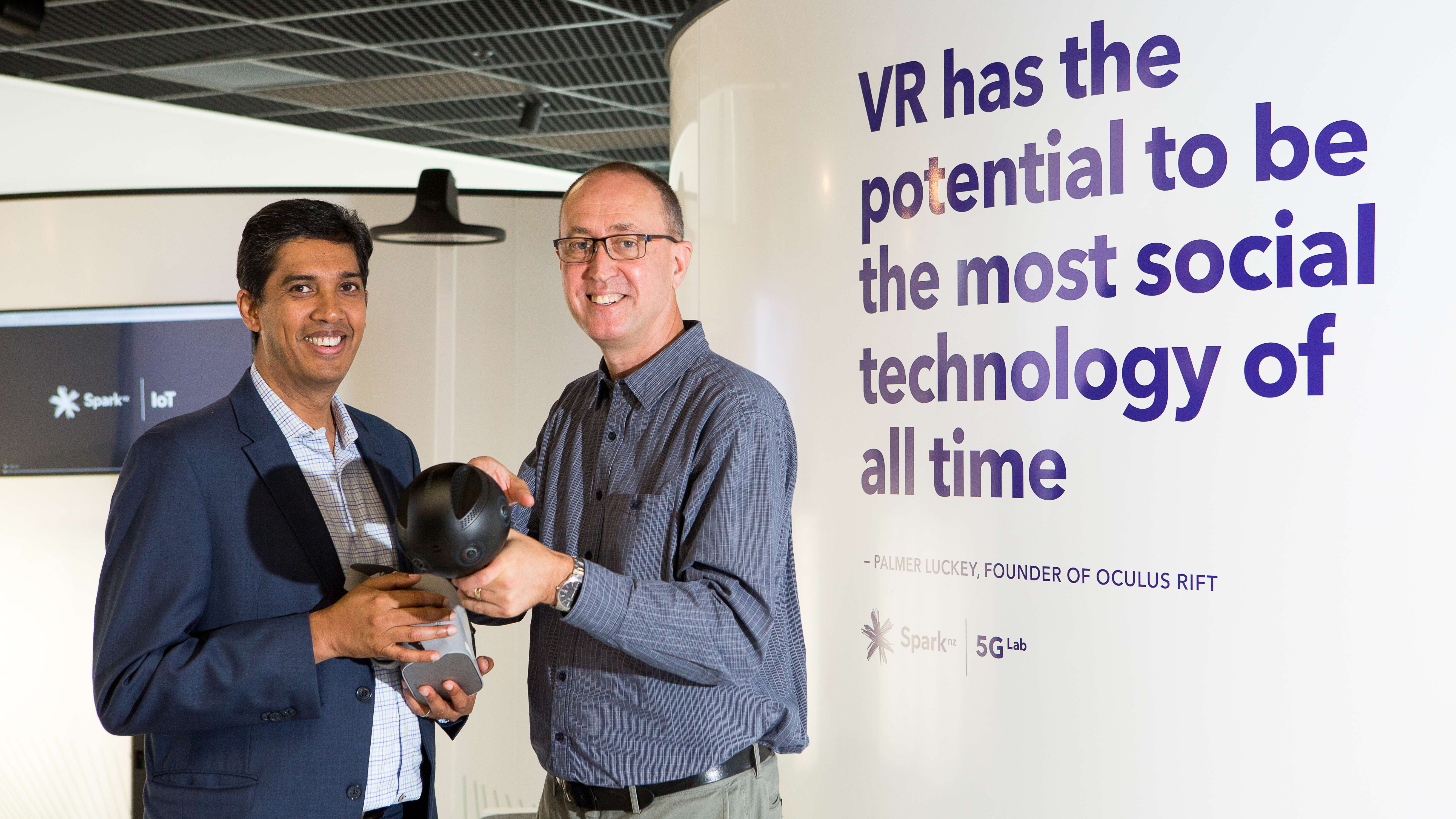Please configure
Spark’s 5G Co-Lab Space now open for business
Spark’s 5G Co-Lab space has officially opened - designed to give New Zealand businesses unfettered access to a 5G network, so they can create and foster ideas, products and experiences with collaboration and innovation at its heart.
Spark’s General Manager of Value Management Raj Singh says that the future of 5G is in the hands of our customers and partners and we want to sponsor Kiwi businesses to get a head-start before 5G is rolled out to all of New Zealand.
“We believe that the most amazing things you can do with 5G haven’t been invented yet, so we have based some of our technical engineers here for our customers and partners to come in and collaborate on co-creating the future of 5G,” says Raj.
The Co-Lab space is an extension of Spark’s interactive 5G Lab which Spark launched late last year with Emirates Team New Zealand.
Delivering 5G to New Zealand Businesses
Prior to the official launch today, three Kiwi businesses got exclusive first access to Spark’s Co-Lab space –The Patience Project, Paymark and Ohmio. All three businesses, with very different use-cases successfully tested and explored the future of their business in a 5G world.
Helping children with long-term illnesses
Charity, The Patience Project is one of the first to move in and use Spark’s pre-commercial 5G network with the aim of combating social isolation for all Kiwi children diagnosed with a long-term illness.
Initiator of the Patience Project, Ben Martel, gave up his day job to fulfil a promise he made to his son Liam, before he died three years ago. Liam had undergone a three-year journey with cancer and a degenerative lung condition. Ben soon realised what he missed most was the normal everyday interaction of going to school, and in his final days he asked Ben to do something that made a positive difference for children diagnosed with a condition that involved long-term treatment.
So, Ben came up with the idea of equipping children enduring long term illness with a virtual reality headset and putting a 360-degree live streaming camera inside their classrooms. That way, a child confined in a hospital ward or bedroom could be virtually transported to school and have the ability to take an active part in lessons as well as benefit from a social connection with his or her peers.
“We’re really excited to have the Patience Project in Spark’s 5G Co-Lab space and are thrilled to see that with the help of Spark’s network team and 5G technology, the Patience Project will have the potential to reach far more children experiencing long-term illness due to its ability to not rely on expensive hardware and utilise more cost-effective technologies such as cloud computing. This means that the 360-degree camera can be wireless and will no longer be stuck in one classroom but have the ability to move from class to class, or even go on field trips,” says Raj.
“Furthermore, 5G’s ability to reach up to 100x faster speeds combined with low latency will greatly help to minimise motion sickness that many experience whilst using the virtual reality headset and patients can experience real-time two-way communication via voice without lag,” * says Raj.
Low latency for the future of payment
Paymark, the New Zealand payments company that developed EFTPOS 30 years ago has explored how 5G can enhance their payment innovation including the ability to use facial recognition technology to pay for goods and services.
Paymark believes the advantages of 5G include deploying their software at faster speeds (payments need near-zero latency) while allowing them to move costly infrastructure into the cloud. This will shrink the hardware required to run innovative payment technologies like facial recognition. It will also reduce the cost to deploy this technology across small and large retailers alike.
Paymark’s goal is to make the payment process a true frictionless experience for consumers whilst reducing cost and creating efficiencies for Kiwi retailers - much like Uber has done with taxi transport.
“While we are only at the start of our journey, use cases like this really does go to show how 5G can help Kiwi businesses explore the possibilities and prepare for a 5G world,” says Raj.
New Zealand’s first 5G-connected driverless car
Earlier this year Ohmio and Spark showcased New Zealand’s first 5G connected driverless car down in Auckland’s Wynyard Quarter.
The 5G-connected driverless car was developed by Ohmio, a New Zealand company which has been trialling autonomous vehicles in Christchurch’s airport. Since these trials, the car has been upgraded with new technology to ensure it integrates with Spark’s 5G test network.
Raj says the key to operating autonomous vehicles is ultra-low latency, which is the reaction time between one device to another. “5G will provide enhancements to autonomous driving such as the ability to communicate with traffic lights, other vehicles on the road and infrastructure.”
For more information on Spark’s 5G Co-Lab or to apply to book a testing session visit www.spark.co.nz/5g
Notes to the editor
*5G speeds are based on indoor tests performed at the Spark 5G Lab
Latency: The time it takes for data to travel from a device (i.e. a smartphone) to the network and back.

Cassie Arauzo
+64 21 0249 1562 | Cassie.Arauzo@spark.co.nz
Please configure








